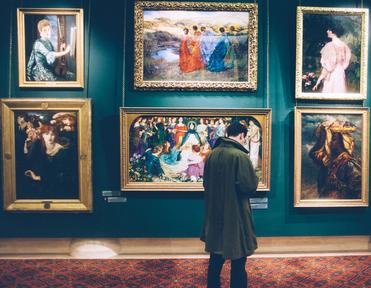Quiz Answer Key and Fun Facts
1. Welcome to the enormous American Museum of Natural History. You know you're in the right place because you're excited to see one of the Museum's trademark installations in front of you... a Barosarus fossil. On the walls are inscribed numerous quotations, among them "The nation behaves well if it treats the natural resources as assets which it must turn over to the next generation increased; and not impaired in value." Where are you in the Museum?
2. If the Museum were to have a popularity contest, the dinosaur exhibits would probably be a shoo-in for first place. Into which of the following categories are the dinosaur fossils and exhibits organized?
3. To get anywhere near the overwhelming Tyrannosaurus Rex fossil, you'll have to gently ease past the dozens of rapt children staring up at it... or perhaps make a sudden loud dinosaurlike noise and send them scurrying. T. Rex has been a Museum attention-getter since 1915. What was changed about him in 1995?
4. Where in the Museum would you encounter the following terms:
Plesiadapis, Notharctus, Aegyptopithecus, Proconsul, Sivapithecus?
5. The American Museum of Natural History displays a magnificent set of Tlingit armor. Who were/are the Tlingits?
6. Which of the following is NOT true of the Museum's beloved whale?
7. What was Carl Akeley's contribution to the American Museum of Natural History?
8. Which of the following extinct animals is represented by a fossil at the Museum?
9. When cultural anthropology was in its infancy, this woman was at the forefront as scientist, explorer, writer, and teacher. She also spent fifty years in the Department of Anthropology at the American Museum of Natural History. Name this "Coming of Age in Samoa" author.
10. Everyone who visits the American Museum of Natural History discovers a favorite exhibit, and mine is the Hall of Gems and Minerals. Nowhere else can you see a 563-carat star sapphire, the world's largest. What mineral creates the Star of India's star effect?
Source: Author
LilahDeDah
This quiz was reviewed by FunTrivia editor
Beatka before going online.
Any errors found in FunTrivia content are routinely corrected through our feedback system.

